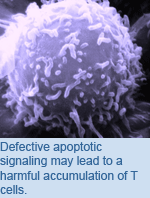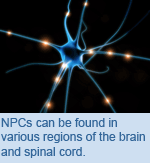
October 2011
Welcome to Net Results EXPRESS
Net Results EXPRESS (NRx) is an award-winning, monthly e-newsletter highlighting medical and scientific breakthroughs, major grants and honours awarded, and other research-related events at UHN. Through NRx you can read about ongoing research at our four research institutes, the Ontario Cancer Institute (OCI), the Toronto General Research Institute (TGRI), the Toronto Western Research Institute (TWRI) and the Toronto Rehabilitation Institute (TRI). We hope you will find this newsletter informative and helpful. If you have feedback or questions, please contact www@uhnresearch.ca. Christopher J. Paige, PhD, FCAHS |
PMH Awarded Third National Cancer Institute Contract
"This third contract renewal, which provides approximately $9.1M in new funds, will allow the Consortium to continue to conduct revolutionary clinical trials with promising combination therapies that are pivotal for drug development," explains Dr. Oza. "Importantly, these funds will allow our clinical trials program to provide oncology patients with rapid access to novel anti-cancer therapies." A contract holder since 2001, PMHC has accrued more than 1400 patients on early phase clinical trials and includes participating sites in British Columbia, Alberta and Ontario. The new five-year contract will allow PMHC to continue to evaluate the biologic effects of CTEP agents on their molecular targets, for biomarker discovery and validation, with implementation of standardized operating procedures. Explains Dr. Christopher Paige, VP Research, "PMH is an internationally recognized leader in cancer research and our clinical research program is of the utmost importance. PMH is proud to host such an outstanding group of clinician scientists who have launched over 80 phase I/II clinical trials, continue to meet target accruals, and draw upon disease-site expertise. This new contract and our clinical group’s strong track record of success will ensure our clinical trials enterprise continues to flourish, maintaining PMH’s position as a global leader in the fight against cancer. PMHC's continued success would not be possible without the support of NIH as well as the Robert & Maggie Bras and Family New Drug Development Program and the Princess Margaret Hospital Foundation." |
Immune Disorders: New Insights into Cell Regulation
Similar to humans with autoimmune lymphoproliferative syndrome, mice that were missing the ability to express specific receptors to activate caspase-8 produced a number of fatal symptoms including harmful T cell accumulation and autoimmune disease. Dr. Hakem generated double mutant mice that lacked both caspase-8 (only in their T cell lineage) and Bim, and unexpectedly found that they exhibited an extended life span. The group believs that the inactivation of caspase-8 increases necroptosis—an alternative cell death process—thereby eliminating T cell buildup and suppressing autoimmunity in the absence of Bim. Explains Dr. Hakem, "Our results demonstrate the crucial role that caspase-8 plays in maintaining the homeostasis of T cells and supports a role for necroptosis in the suppression of autoimmunity." Caspase-8 inactivation in T cells increases necroptosis and suppresses autoimmunity in Bim-/- mice. Bohgaki T, Mozo J, Salmena L, Matysiak-Zablocki E, Bohgaki M, Sanchez O, Strasser A, Hakem A, Hakem R. Journal of Cell Biology. 2011 Oct 17. [Pubmed Abstract] This work was supported by the Canadian Institutes of Health Research, the National Health and Medical Research Council, Juvenile Diabetes Research Foundation, the Leukemia and Lymphoma Society of America, and the Princess Margaret Hospital Foundation. |
Immunity: Cell Adhesion in Leukocytes
When tissues or organs suffer from damage or infection, the immune system responds by recruiting leukocytes—immune cells responsible for defense against infections—from the circulatory system to the targeted area. Work from the laboratory of TGRI Senior Scientist Dr. Myron Cybulsky has shed light on the mechanism through which migrating leukocytes adhere to the walls of blood vessels to leave the circulation and fight infection. Leukocytes attach to the blood vessel wall through a series of adhesive interactions utilizing several cell-surface adhesion molecules, a process known as the leukocyte adhesion cascade. One of these molecules is a4ß1 integrin. Its adhesive and signaling functions are controlled through interactions with proteins in the cell. Dr. Sharon Hyduk and other colleagues from Dr. Cybulsky’s lab evaluated the roles of two proteins, talin-1 and kindlin-3, in mediating a4ß1 integrin directed leukocyte adhesion. These proteins were found to be required for stabilization of integrin-mediated leukocyte adhesion. Remarking on the findings of this study, Dr. Cybulsky stated, "Cell adhesion is an important cellular process, not only for the leukocyte adhesion cascade, but also for tumour metastasis and blood vessel development. Our results give us a greater understanding of this fundamental function." Talin-1 and kindlin-3 regulate a4ß1 integrin-mediated adhesion stabilization, but not G protein-coupled receptor-induced affinity upregulation. Hyduk SJ, Rullo J, Cano AP, Xiao H, Chen M, Moser M, Cybulsky MI. Journal of Immunology. 2011 Oct 15. [Pubmed abstract] This work was supported by the Canadian Institutes of Health Research. |
Neurology: Uncovering Factors Associated with the Development of Neurons
The researchers matured the NPCs under conditions mimicking those when NPCs are transplanted into the body and examined the levels of trophic factors—molecules that promote maturation of neurons—in a number of different NPC sources. They identified 13 essential trophic factors as well as the environmental conditions controlling these factors, which included induction of NPC maturation through exposure to artificial trophic factors and the amount of time the cell has spent growing in a dish. These findings provide a better understanding of how NPCs mature. As well, by identifying these important factors this work may support the development of better methods for preparation of NPCs for treatment prior to transplantation into the body. In vitro characterization of trophic factor expression in neural precursor cells. Hawryluk GW, Mothe AJ, Chamankhah M, Wang J, Tator CH, Fehlings MG. Stem Cells and Development. 2011 Oct 20. [Pubmed abstract] This work was supported by the Craig H. Neilsen Foundation, the Cervical Spine Research Society, the Canadian Institutes of Health Research, and the Krembil Foundation. |
Clinical Trials: The Impact of Announcements on Company Stock Prices
The group identified 23 positive and 36 negative phase III trials and analyzed the stock prices of the companies that owned the evaluated drugs before and after a public announcement of trial results. Companies that eventually report positive results tended to increase before those results were publicly announced, while the stock prices of companies that end up reporting negative results decline before the results were announced. After announcing clinical trial results companies who reported positive results saw an average increase in stock price by 9.4% after 60 days, while companies who reported negative results had an average decrease in stock price by 4.5%. Commenting about these findings, Dr. Detsky said, "We were surprised to see such a difference in company stock prices in relation to positive vs. negative trial outcome. It emphasized the potential legal and ethical considerations when divulging nonpublic information regarding clinical trials." Company stock prices before and after public announcements related to oncology drugs. Rothenstein JM, Tomlinson G, Tannock IF, Detsky AS. Journal of the National Cancer Institute. 2011 Sep 26. [Pubmed abstract] |
Alzheimer's Disease: Quality of Life Assessed by Family Caregivers
Over 400 family caregivers and patient pairs participated in this study. Family caregivers were asked to assess patient QOL using a number of rating systems, while AD patients were evaluated for cognition, function, and behaviour. The group found that caregiver ratings of patients’ depressive symptoms and patients’ ability to function were consistently the main predictors of family caregiver ratings of patient QOL. Caregiver ratings of their burden of caring for the patient with AD and of their own mood did not significantly influence how they rated patient QOL. "These findings indicate that family caregivers are an important and unique source of determining patient QOL and play an important role in AD treatment," comments Dr. Naglie. Predictors of family caregiver ratings of patient quality of life in Alzheimer's disease: cross-sectional results from the Canadian Alzheimer's disease quality of life study. Naglie G, Hogan DB, Krahn M, Black SE, Beattie BL, Patterson C, Macknight C, Freedman M, Borrie M, Byszewski A, Bergman H, Streiner D, Irvine J, Ritvo P, Comrie J, Kowgier M, Tomlinson G. American Journal of Geriatric Psychiatry. 2011 Oct 19. [Pubmed abstract] This work was supported by the Canadian Institutes of Health Research and the Alzheimer Society of Canada. |
 |
![]()
 Early in October 2011, UHN's Office of Research Trainees (ORT), directed by OCI Senior Scientist Dr. Linda Penn, launched their new website: www.uhntrainees.ca. All members of the UHN community are welcome to use and participate in uhntrainnees.ca. The site serves as a guide for UHN's rich and diverse research environment, a resource for funding applications and travel awards, and a source for career opportunities.
Early in October 2011, UHN's Office of Research Trainees (ORT), directed by OCI Senior Scientist Dr. Linda Penn, launched their new website: www.uhntrainees.ca. All members of the UHN community are welcome to use and participate in uhntrainnees.ca. The site serves as a guide for UHN's rich and diverse research environment, a resource for funding applications and travel awards, and a source for career opportunities.Follow ORT through social networks like Twitter (@uhntrainees) and Facebook. The site is updated daily and new features will be announced in ORT's upcoming monthly e-newsletter.
 UHN congratulates TRI Senior Scientist Dr. Angela Colantonio, Saunderson Family Chair in Acquired Brain Injury Research and Professor of Occupational Science and Occupational Therapy at U of T, for her recent election as a Fellow of the American Congress of Rehabilitation Medicine (ACRM). ACRM acknowledged Dr. Colantonio for her significant research contributions to the field of medical rehabilitation. Dr. Colantonio leads an internationally recognized and funded program of research that addresses brain injury in vulnerable populations, gender issues, long term outcomes and innovative interventions, including knowledge mobilization.
UHN congratulates TRI Senior Scientist Dr. Angela Colantonio, Saunderson Family Chair in Acquired Brain Injury Research and Professor of Occupational Science and Occupational Therapy at U of T, for her recent election as a Fellow of the American Congress of Rehabilitation Medicine (ACRM). ACRM acknowledged Dr. Colantonio for her significant research contributions to the field of medical rehabilitation. Dr. Colantonio leads an internationally recognized and funded program of research that addresses brain injury in vulnerable populations, gender issues, long term outcomes and innovative interventions, including knowledge mobilization.ACRM serves as the world's leading interdisciplinary rehabilitation research organization. Dr. Colantonio was one of only two fellows announced for 2011.
Feedback
Net Results EXPRESS is brought to you by UHN Research Communications. We hope you have enjoyed receiving this message. If you have any feedback, please email www@uhnresearch.ca.
To access archived issues of Net Results EXPRESS, visit uhnresearch.ca/news/netresultsexpress
Some images adapted from the image archives of stock.xchng.ca. UHN and PMH are proud to announce the successful renewal of the Princess Margaret Hospital Phase II Consortium (PMHC) contract through the National Institutes of Health (NIH) led by Dr. Amit Oza. The only non-US site funded, this is the third successful N01 contract renewal for PMHC to design, develop and conduct early phase clinical trials of National Cancer Institute Cancer Therapy Evaluation Program (NCI CTEP) sponsored agents with translational emphasis in an innovative and efficient manner.
UHN and PMH are proud to announce the successful renewal of the Princess Margaret Hospital Phase II Consortium (PMHC) contract through the National Institutes of Health (NIH) led by Dr. Amit Oza. The only non-US site funded, this is the third successful N01 contract renewal for PMHC to design, develop and conduct early phase clinical trials of National Cancer Institute Cancer Therapy Evaluation Program (NCI CTEP) sponsored agents with translational emphasis in an innovative and efficient manner. Apoptosis—the process of programmed cell death—helps to maintain a regulated environment in the body for cells to grow and replenish. This process is monitored by a number of factors including caspase-8, an enzyme that regulates T cells in the immune system, and Bim, a protein that maintains homeostasis of lymphoid and myeloid compartments. Disruption of the apoptotic pathway can result in the development of diseases such as immune disorders and cancer. OCI Scientist Dr.
Apoptosis—the process of programmed cell death—helps to maintain a regulated environment in the body for cells to grow and replenish. This process is monitored by a number of factors including caspase-8, an enzyme that regulates T cells in the immune system, and Bim, a protein that maintains homeostasis of lymphoid and myeloid compartments. Disruption of the apoptotic pathway can result in the development of diseases such as immune disorders and cancer. OCI Scientist Dr.  Neural precursor cells (NPCs) are cells capable of developing into mature neurons. Transplantation of NPCs into a damaged central nervous system (CNS) offers the possibility of replacing damaged neurons and treating serious conditions like spinal cord injury. However, the exact mechanism of how NPCs interact with the CNS to develop into mature neurons remains unknown. A study, published in Stem Cells and Development by TWRI Senior Scientist and McEwen Centre for Regenerative Medicine member Dr.
Neural precursor cells (NPCs) are cells capable of developing into mature neurons. Transplantation of NPCs into a damaged central nervous system (CNS) offers the possibility of replacing damaged neurons and treating serious conditions like spinal cord injury. However, the exact mechanism of how NPCs interact with the CNS to develop into mature neurons remains unknown. A study, published in Stem Cells and Development by TWRI Senior Scientist and McEwen Centre for Regenerative Medicine member Dr.  The results of a phase III clinical trial, which investigates the safety and efficacy of a new drug on a large sample population, can have an impact on the health of patients but also on the financial value of the company developing the drug. A recent study from TGRI Clinician Scientist Allan Detsky has examined the effect of positive and negative outcomes on company stock prices.
The results of a phase III clinical trial, which investigates the safety and efficacy of a new drug on a large sample population, can have an impact on the health of patients but also on the financial value of the company developing the drug. A recent study from TGRI Clinician Scientist Allan Detsky has examined the effect of positive and negative outcomes on company stock prices. Determining the health-related quality of life (QOL) in patients with Alzheimer's disease (AD) is widely recognized as an important measure in treating patients with dementia. However, patients with AD may have difficulty in communicating information for the evaluation of QOL. A multi-centre national study, led by TRI and TGRI Senior Scientist Dr.
Determining the health-related quality of life (QOL) in patients with Alzheimer's disease (AD) is widely recognized as an important measure in treating patients with dementia. However, patients with AD may have difficulty in communicating information for the evaluation of QOL. A multi-centre national study, led by TRI and TGRI Senior Scientist Dr.